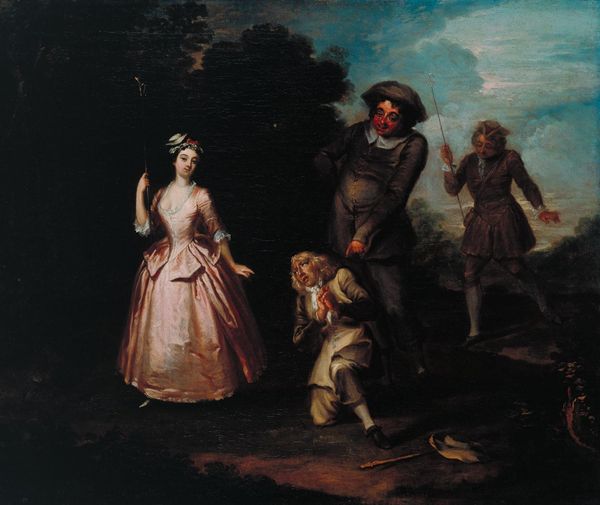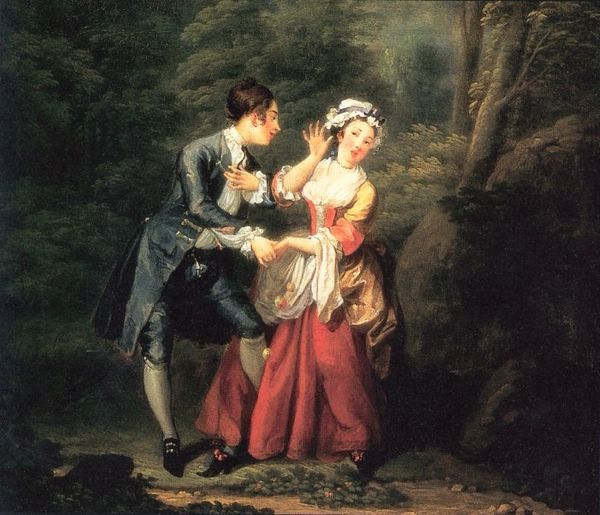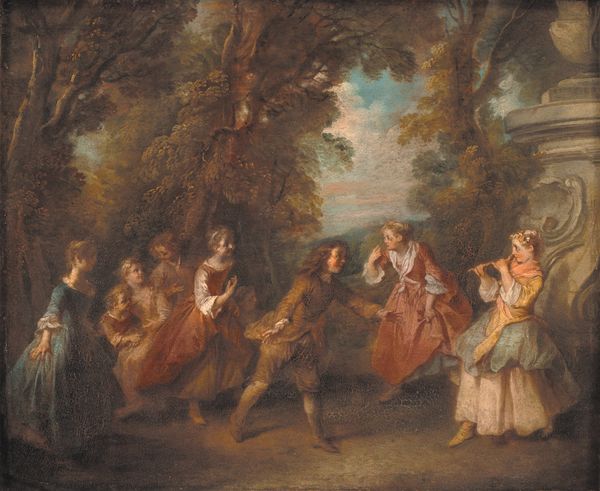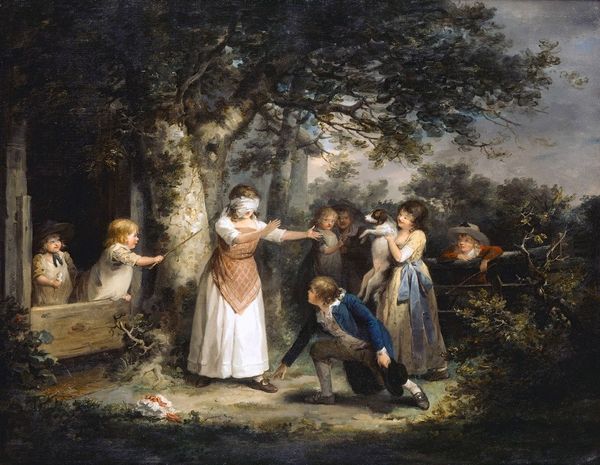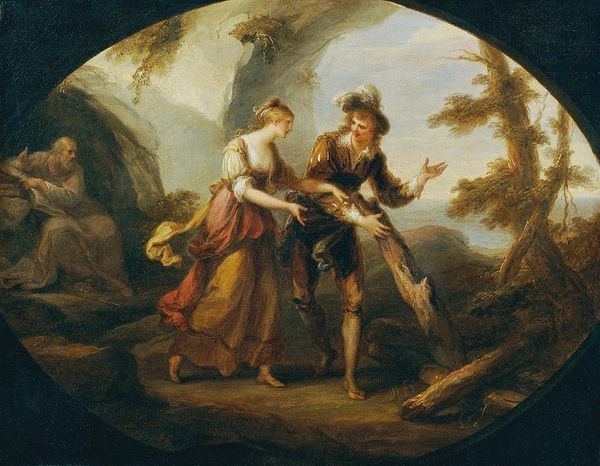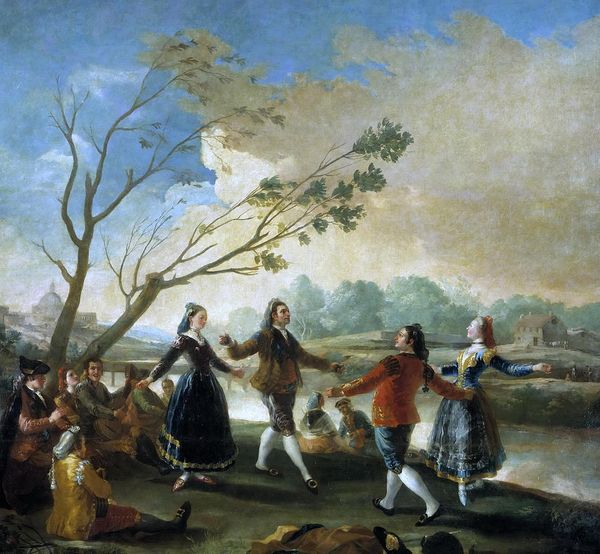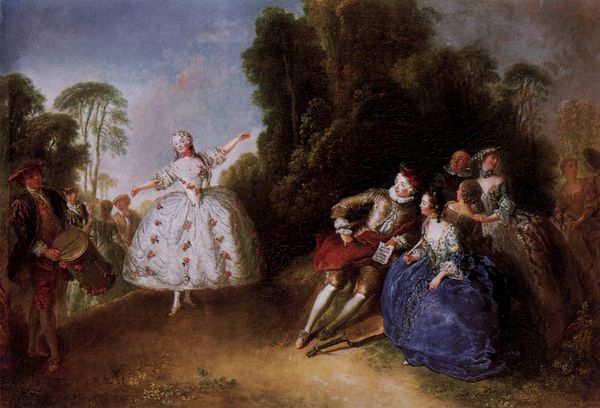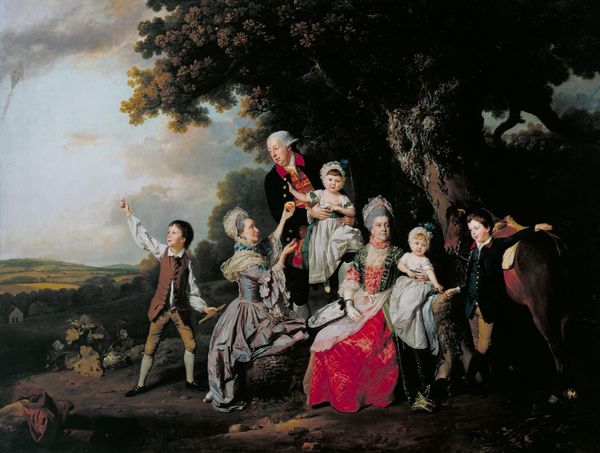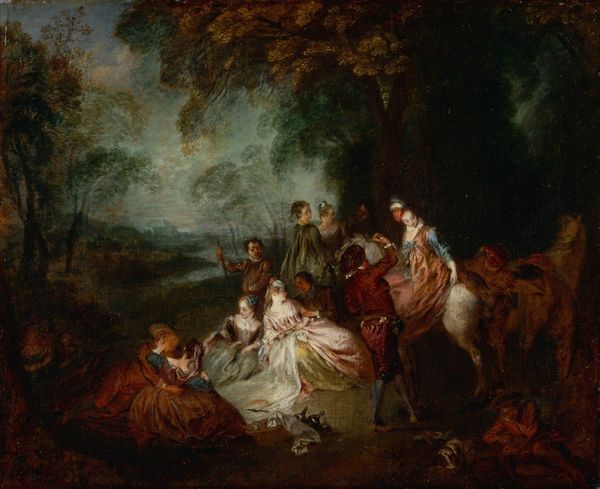
Damon and Phillida Reconciled: A Scene from Colley Cibber’s ‘Damon and Phillida’ 1740
0:00
0:00
Dimensions: support: 635 x 762 mm
Copyright: CC-BY-NC-ND 4.0 DEED, Photo: Tate
Editor: This is William Jones's 'Damon and Phillida Reconciled'. It's an oil on canvas, depicting a theatrical scene. What cultural narratives do you see reflected in this reconciliation scene? Curator: The painting captures a very specific theatrical moment. Note how the central couple, Damon and Phillida, occupy the brightly lit space, framed by darkness and… chaos? The figures in the background, frozen in attitudes of shock and mock horror, remind us of the performance's artifice. Editor: So, you see that artifice as a key symbol? Curator: Absolutely! It reflects the societal expectations around love and relationships at the time. Courtship was a performance, shaped by societal rules. And even reconciliation, as depicted here, becomes another act within that larger play. What do you make of the stage-like composition? Editor: That's insightful! I hadn't considered the 'performance' aspect beyond the immediate scene. It's definitely given me a fresh perspective.
Comments
tate 8 months ago
⋮
http://www.tate.org.uk/art/artworks/jones-damon-and-phillida-reconciled-a-scene-from-colley-cibbers-damon-and-phillida-t03111
Join the conversation
Join millions of artists and users on Artera today and experience the ultimate creative platform.
tate 8 months ago
⋮
The second picture shows the reconciliation of the two quarrelling lovers, Damon and Phillida, to the disappointment of the heroine’s two awkward suitors, Mopsus and Cimon. It probably represents Kitty Clive as Phillida, and Charlotte Clarke as Damon in 1739. Damon was often a ‘breeches part’, that is, one played by a woman. The theatre was always a strong focal point for London’s artistic community and scenes from plays or actors in character became an increasingly important genre for painters. Gallery label, August 2004
